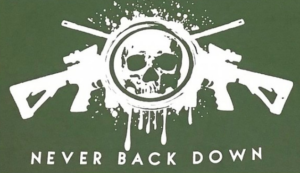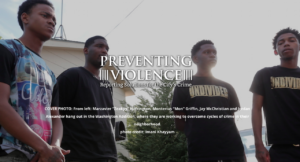
I’ve had a remarkable public response to my Guardian story about Benny Ivey, the Simon City Royals, and the apparent growth of white gangs in Mississippi and America in recent decades, especially in areas outside of major cities such as the Midwest and the South. In the piece I had originally called “Evolution of a Redneck Gangster”—double meaning, get it?—I tell the harrowing story of a former Royals gang leader in Mississippi, and the reasons he joined the gang and got involved in crime in the first place. His reasons can sound very similar to those of the people of color who join the more highly publicized black, Hispanic and ethnic gangs in America: generational poverty, addiction, hopelessness, despair, lack of education and weak role models to teach the basics of life and success.
The story also explains the under-reported fact that white gangs—which include the Royals, white supremacist gangs and white biker “clubs,” all of which can be violent—have increased in many areas of the country outside of the typical urban areas. This is especially true in the South and in states like Mississippi and in the midwest in states like Wisconsin, which drew Royals from Chicago (or the Royals brand through prison and world-of-mouth) decades ago. I also include CUNY law professor Babe Howell explaining that law enforcement may far under-count white gang members in America, with most statistics we hear provided by law enforcement, presenting a circular problem that makes it hard to trust the statistics.
I also cite research by law professor Jordan Blair Woods showing that gang members are usually divided into separate categories than the “criminal street gang” group where most black and Hispanic gangs land, tending to populate gang databases. One study, cited in my article, attributed this to systemic racism and under-reporting by media, often encouraged in whiter areas that could suffer economically from reports of gangs. As a result, that researcher found, white gang members may not be either prosecuted as strongly as black and Hispanic gang members or offered needed interventions.
I can’t over-state how important I think Woods’ gang-categories point is. I talked to gang and violence experts in the U.S. who had never heard of the Simon City Royals, despite their deep roots in Chicago and as a member of the Folk Nation gang alliance alongside the Black Gangster Disciples. In a quote that didn’t make it into the story, Howell told me she thinks the fact that law enforcement under-count white gang members in general means that even the experts may not know enough about them.
Also, I think it’s important that much of the growth in white gangs seems to be in the middle of the country and in the South where national media, let’s be honest, historically has paid far too little attention and where local crime reporting often means quoting the cops and leaving it there with no context, causes or potential solutions making it into the stories. This information from the National Gang Center was in an earlier draft of my Guardian piece, but had to be cut for space. It’s interesting to note that the center cites the law enforcement data in graphs, but also states the following (my emphasis added):
The National Gang Center reports that middle America exploded with new gang cities from 1970 through 1995, increasing 32 percent in the South and 26 percent in the Midwest, compared to 6 percent in the Northeast, and 3 percent in the West. The Royals are now one of the largest and most violent gangs in Mississippi and growing in others, but without a direct connection back to Chicago.
The National Gang Center reports a similar racial disparity between police and youth gang identification, concluding that a local gang population reflects the racial-ethnic composition of the community combined with socioeconomic conditions. “Gangs tend to emerge in the most disadvantaged areas and thus naturally attract the disadvantaged youth residing in those areas,” it states.

